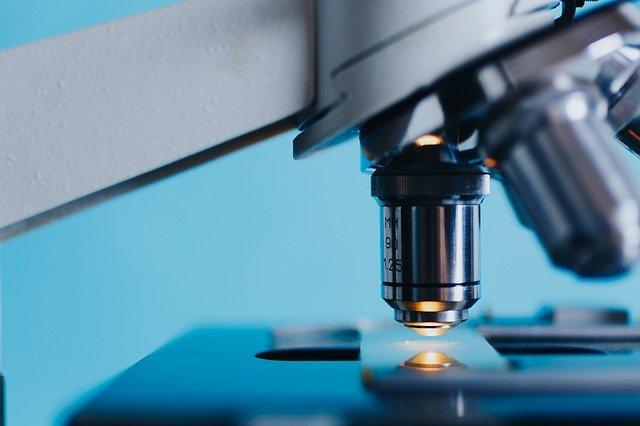Synthetic peptides CJC-1295, Ipamorelin, and GHRP-2 have each been proposed by research teams as candidates for the role of possibly stimulating the production of growth hormones. The findings of certain studies suggest the interaction of all three peptides in a blend seems to have a synergistic effect, which might result in a novel peptide activity.
The peptides CJC-1295 and Ipamorelin are considered to be “growth hormone secretagogues” (GSHs). This suggests that these peptides could promote the release of growth hormones, even though they are not recognized as growth hormone release peptides (GHRP). Like Ghrelin, a naturally occurring peptide, GHRP-2 is a synthetic peptide structurally similar to Ghrelin. [i] It would seem that GHRP-2 peptides may cause the production of growth hormones, which may also increase the amount of food consumed and speed up the metabolism. [ii]
CJC-1295, Ipamorelin and GHRP-2 Peptide Blend Research
CJC-1295, Ipamorelin, GHRP-2 Blend, and Growth Hormone Secretagogues (GSHs) are the compounds that make up this mixture.
The potential of growth hormone secretagogues and growth hormone-releasing peptides in test subjects was investigated in one clinical trial [iii]. Several test subjects were given the GSHs, and after that, all of them were observed closely to look for any changes in their physiological state. As a result of this in-depth research, the researchers hypothesized that these peptides seemed to boost growth rates in younger subjects, increase hunger, and improve lean mass in more mature subjects. It was claimed that these peptides might stimulate a probable decrease in bone turnover in obese subjects, leading to an increase in lean mass and an improvement in the subjects’ sleep cycle.
CJC-1295, Ipamorelin, and GHRP-2 Peptide Blend and Growth Hormone
Much clinical research involving test subjects with growth hormone deficiencies has been carried out. These investigations are being documented here for the sake of research and education; however, similar studies are still being conducted and do not provide data that can be considered definitive about the peptide’s putative mode of action. In these studies, peptides that stimulate growth hormone release seemed to exert their effects in two distinct ways: perhaps by inducing the pituitary gland to secrete growth hormones or acting on the hypothalamus’s arcuate nucleus. Both of these mechanisms have been hypothesized to be at play. Even though certain peptides, such as GHRP-2, Ipamorelin, and CJC 1295, seemed to demonstrate substantial releases of growth hormones, it is still unknown which of the two pathways was responsible for the observed effects. In addition, this research suggested that the peptides in question might be able to influence ingestive behavior, cardiac tone, and sleep via the action of seemingly particular receptor agonists. [iv]
In another piece of research [v], growth hormone-stimulating peptides were given to six test subjects who lacked growth hormones and were on the verge of experiencing growth failure. During this period, all models measured the levels of growth hormone toxicity and episodic growth hormone secretion. It was noted that there seemed to be a progressive increase in the concentration of growth hormones in all subjects during the research and for a short period after it had concluded. The findings of the tests suggested that the peptides were “well tolerated and […] stimulate GH secretion,” as stated by V. Mericq et al. Studies similar to this one are still being conducted, and these peptides call for more investigation.
CJC-1295, Ipamorelin, GHRP-2 Peptide Blend, and Other Hormones
The major objective of this research [vi] was to investigate the potential effects of growth hormone-stimulating peptides on the levels of several other hormones, such as adrenocorticotropic hormone (ACTH), prolactin, and cortisol concentration. The test models were delineated into groups each with a different peptide, and the results were compared. It was suggested that the growth hormone levels in both groups appeared to rise dramatically following the presence of peptide, with the concentration seeming to be greater in the younger test subjects versus the mature test subjects.
CJC-1295, Ipamorelin, and GHRP-2 blend is restricted to usage in research and educational institutes, and more research investigation is required to fully understand the mechanism of action of these compounds. Biotech Peptides is a reputable resource for licensed researchers purchasing high quality peptides. Compounds used in scientific research should never be used outside of a laboratory.
References
[i] Garcia JM, Merriam GR, Kargi AY. Growth Hormone in Aging. [Updated 2019 Oct 7]. In: Feingold KR, Anawalt B, Boyce A, et al., editors. Endotext [Internet]. South Dartmouth (MA): MDText.com https://www.ncbi.nlm.nih.gov/books/NBK279163/
[ii] Laferrère, Blandine et al. “Growth hormone releasing peptide-2 (GHRP-2), like ghrelin, increases food intake in healthy men.” The Journal of clinical endocrinology and metabolism vol. 90,2 (2005): 611-4. https://www.ncbi.nlm.nih.gov/pmc/articles/PMC2824650/
[iii] Sigalos, John T, and Alexander W Pastuszak. “The Safety and Efficacy of Growth Hormone Secretagogues.” Sexual medicine reviews vol. 6,1 (2018): 45-53. doi:10.1016/j.sxmr.2017.02.004 https://www.ncbi.nlm.nih.gov/pmc/articles/PMC5632578/
[iv] Rogério G. Gondo et al, Growth Hormone-Releasing Peptide-2 Stimulates GH Secretion in GH-Deficient Patients with Mutated GH-Releasing Hormone Receptor, The Journal of Clinical Endocrinology & Metabolism, Volume 86, Issue 7, 1 July 2001, Pages 3279–3283, https://doi.org/10.1210/jcem.86.7.7694.
[v] Mericq V, Cassorla F, Salazar T, Avila A, Iñiguez G, Bowers CY, Merriam GR. Effects of eight months treatment with graded doses of a growth hormone (GH)-releasing peptide in GH-deficient children. J Clin Endocrinol Metab. 1998 Jul;83(7):2355-60. https://pubmed.ncbi.nlm.nih.gov/9661608/
[vi] Emanuela Arvat, Lidia Di Vito, Barbara Maccagno, Fabio Broglio, Muni F Boghen, Romano Deghenghi, Franco Camanni, Ezio Ghigo, Effects of GHRP-2 and Hexarelin, Two Synthetic GH-Releasing Peptides, on GH, Prolactin, ACTH and Cortisol Levels in Man. Comparison with the Effects of GHRH, TRH and hCRH, Peptides, Volume 18, Issue 6, 1997, Pages 885-891, ISSN 0196-9781, https://doi.org/10.1016/S0196-9781(97)00016-8












